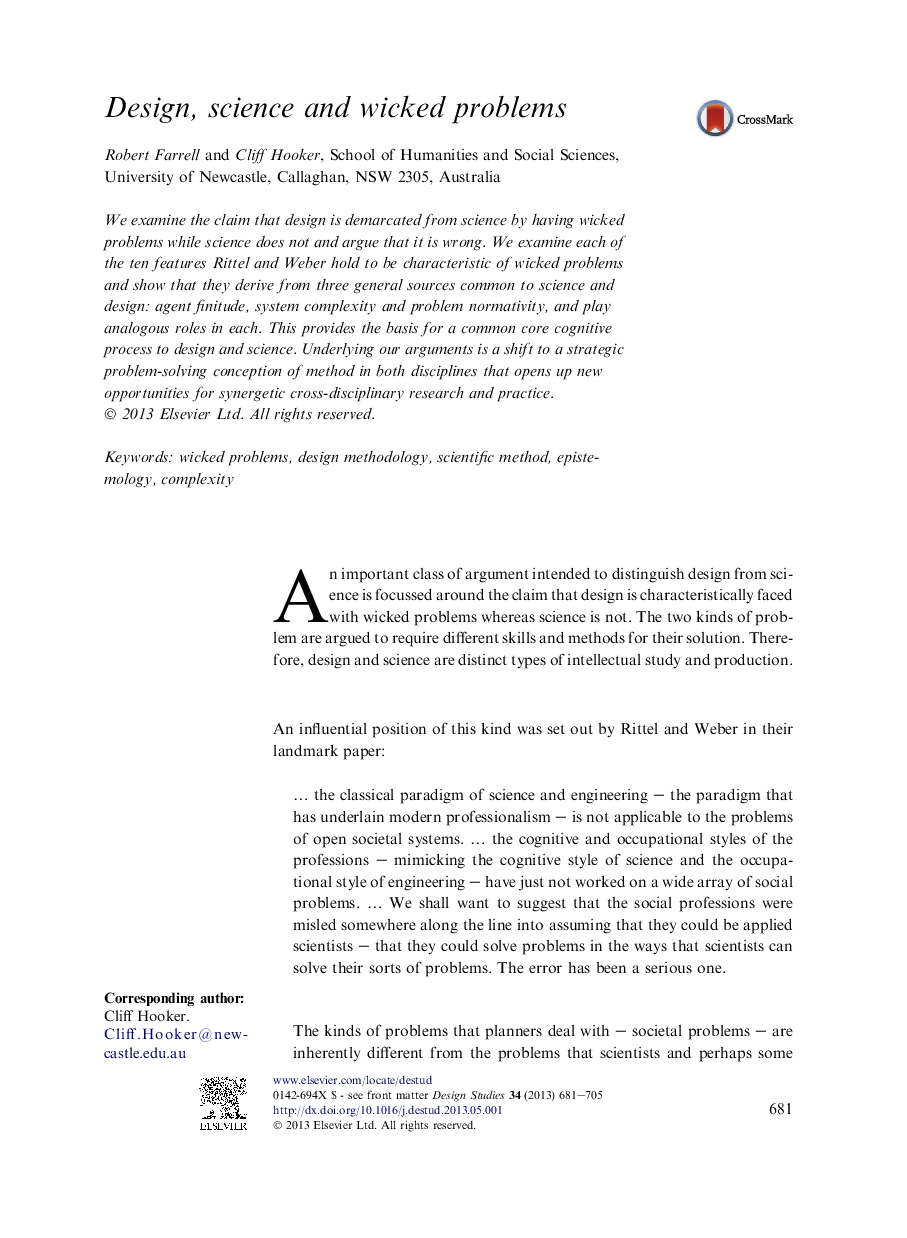| Article ID | Journal | Published Year | Pages | File Type |
|---|---|---|---|---|
| 261548 | Design Studies | 2013 | 25 Pages |
•That design is basically different from science because of its wicked problems is shown mistaken.•The ten features of wickedness are shown to derive from three sources common to design and science.•These, agent finitude, system complexity, problem normativity, offer a new analysis of wickedness.•A strategic model of method underlies both disciplines, opening up mutual understanding.
We examine the claim that design is demarcated from science by having wicked problems while science does not and argue that it is wrong. We examine each of the ten features Rittel and Weber hold to be characteristic of wicked problems and show that they derive from three general sources common to science and design: agent finitude, system complexity and problem normativity, and play analogous roles in each. This provides the basis for a common core cognitive process to design and science. Underlying our arguments is a shift to a strategic problem-solving conception of method in both disciplines that opens up new opportunities for synergetic cross-disciplinary research and practice.
